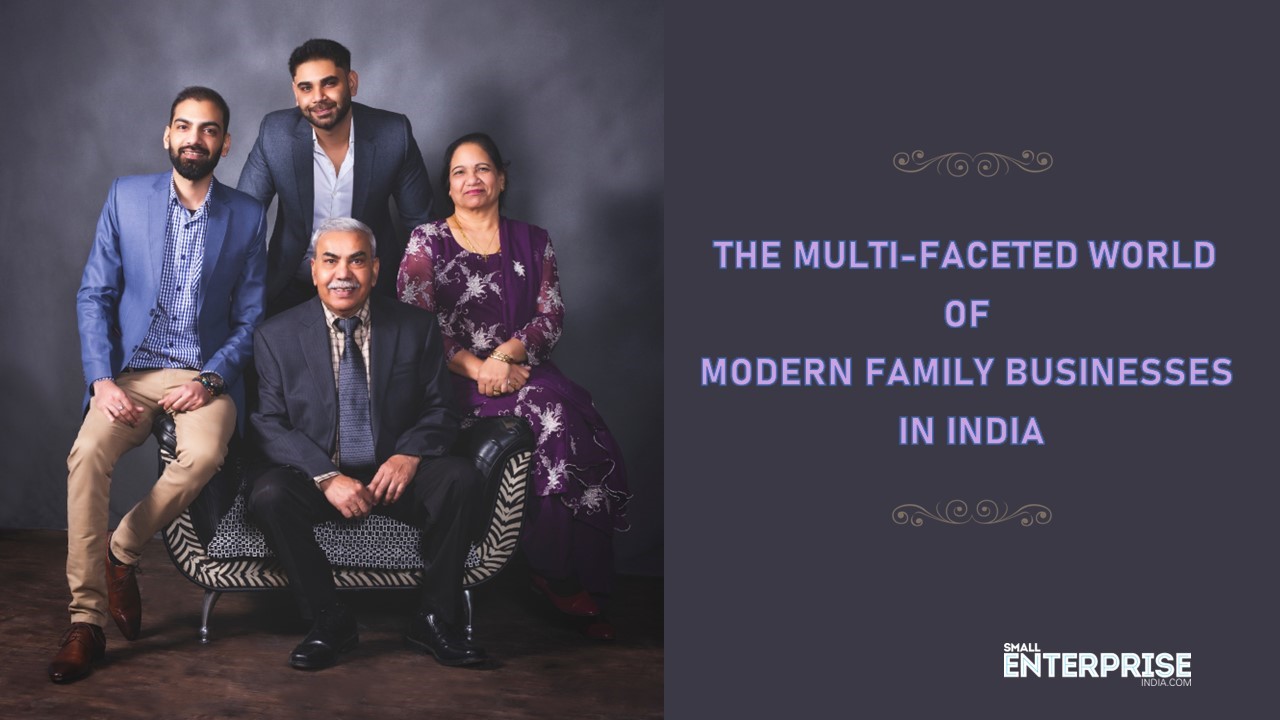
India has a rich and diverse culture, and this is reflected in the way we do business. From multi-generational family businesses to Silicon Valley startups, Indian businesses have made their mark globally.
In this article, we will delve into the fascinating world of family-owned businesses in India, exploring the trust, value, family, revenue, modernization, employee, technology, and new generation factors that contribute to their success or challenges.
The Trust Factor
In a job market marked by massive layoffs globally, family businesses continue to hire, retain, and train their employees. An interesting global study – Edelman Trust Barometer on family business noted that family businesses are more trusted than other businesses in general. In fact, India with a trust score of 78% in family business is way above the average trust score of 69% globally.
In fact, this trust and value superiority can become a competitive advantage for family-owned businesses, by differentiating themselves based on heritage, family-oriented culture, family goodwill, and reputation.
Conversely, if there are issues with the family’s reputation, this can undermine the trustworthiness of the business. One area of improvement for the Indian Family-owned business may be to build trust by being more transparent in their decision-making process and operations. An important aspect of this is transparency in the HR policies of an organization, especially salary structures, performance, and appraisals.
The Family Factor
It is interesting to note that family business is not a concept that is unique to India. However, what is unique is that India is perhaps the only country where we have the “Joint Family Business”. This means that the family not only do business together, but they live together too.
It is for this very reason that family dynamics play a huge role in the success and failure of the organization. Conflicting priorities, disagreements about the direction of the business, and unclear roles and responsibilities become more challenging when infused with family drama. It becomes difficult to separate business and family roles, close generational gaps and ultimately establish professional structures for the betterment of the organization.
On the other hand, strong family dynamics result in a powerful business story that carries a lot of weightage with key stakeholders inside and outside the organization. A strong family-driven culture and goodwill can also enable the organization to be resilient under volatile conditions.
It is quite fascinating to realise that many of the current Indian business houses have their roots as a family-owned businesses. Go ahead and name the top business houses in India and see for yourself!
The Revenue Factor
India has the third-largest number of family businesses globally. In fact, Family businesses account for 79 percent of the national GDP in India.
However, only 20% of the family businesses contribute to 80% of this GDP value. The rest are ensnared in the struggle to expand and diversify. Some of the factors contributing to this challenge are limited resources in terms of funds, expertise, technology, experience, etc. Many of these organizations experience growth stagnation or even a downward trend before they identify the need to get external support from industry bodies, consultants, or even business mentors.
The Modernization Factor

We can no longer use the prefix “Traditional” when it comes to Family Businesses in India. Family Businesses today invest in professionalising their organization by exposing the next generation to global education and work experience. Secondly, they also bring in professionals to take on strategic roles that define the future of the organization. And that’s why we can proudly rename these business houses as “Modern Family Business”.
With these changes, Large Modern Family Businesses have gained the ability to think BIG, speak the global business languages, attract, and retain key talent, and measure massive success year on year.
The Employee Factor
Employees of large family businesses feel more connected to the core purpose of the organization and have more opportunities to participate in the planning process of achieving this purpose. These organizations are the ones who have invested in their employees, be it remuneration, learning and development, processes, systems, or technology.
Paradoxically, there are family-owned businesses where the upper echelons do not engage with the employees for strategic decisions, sandboxing this responsibility only with the core family members. The employees are then seen as an execution team, maybe even an expert execution team, but nevertheless limited to tactics and action only. These are the organization that struggles with higher employee churn, especially at the mid-managerial level, as the managers do not see any growth trajectory into leadership levels.
There often exists huge salary disparities between family-owned businesses and professionally run businesses. Sometimes there are salary disparities with the family-owned organization too. One main reason is the lack of HR practices such as employee grade structure, performance management systems, and a structured compensation and benefits strategy.
The Technology Factor

Technology has penetrated every aspect of our economy. And Family-Owned Businesses are no exception. Though slow to adopt, the changing landscape in India has galvanized these businesses to adopt technology to stay competitive, adhere to legal and governmental compliances, improve efficiency, increase productivity, reduce cost, and enhance customer experience.
The Digital transformation wave across India has also pushed traditionally non-tech, Family-owned businesses to embrace digital payments, cybersecurity, digital marketing, and sales. The SAAS model has also made it possible for these businesses to invest in technology without the need to have a full-fledged in-house tech team to manage the technological assets of the organization.
The New Gen Factor
While the continuity of family-owned businesses depends on handing over the baton from one generation to the next, the reality today is that the senior gen continues to play a crucial role in stewarding the organization. In fact, a study in India showed that more than 80% of these businesses continue to have the founders playing an active role in the family business. And most often than not, these founders have crossed the retirement age of 60-65 years. The impact of this is that succession timing is not defined clearly. Two generations with possibly contradicting priorities struggle to exert control of the future direction of the organization.
This could also be one of the reasons for the slower adaptation of technology and a slower rate of modernization compared to other general businesses.
However, as discussed earlier, with the exposure of the next generation to global education, it would be a matter of time before Modern Family Businesses bridge this gap.
The Leadership Factor
We have covered this in bits and pieces throughout this article. However, the leadership factor is important enough to be addressed separately. Family-Owned businesses seem to equate familial seniority with leadership roles. Senior members of the family typically hold leadership roles functionally of business units wise.
While some of these seniors have developed leadership traits over time, most of them may be ill-equipped to manage the responsibilities of the leadership role. Again, while some of them have accurately identified this shortcoming and hired professional leaders from outside the family, most of them are oblivious to the leadership deficiency.
Solutions Abound
There are many solutions to these challenges. Some of the ones, worth exploring are.
- Implementing a clear family business governance structure, where responsibilities are divided based on merit to both family and non-family executives. A board of directors with independent members could add considerable value in this regard.
- Investing in HR best practices from hiring to retiring. Employee development programs for technical expertise, improved soft skills, and leadership traits through mentoring and coaching should be prioritized.
- Developing structured succession plans to ensure that the business is passed on to the next generation in a seamless manner. This would also ensure that the most qualified family member is chosen to lead the business.
- Diversifying the business into newer markets or developing new product/ service lines will help the family-owned business create new growth opportunities and mitigate risks.
- Embracing technology to improve efficiency and create momentum for scale. Investing in data-driven decision-making capabilities, and exploring technology platforms such as CRM, HRMS, PMS, etc, would yield huge rewards to the business.
- Seeking outside advice and providing objective advice on critical business decisions, latest industry trends, and best practices. This could include professionals such as lawyers, accountants, technology consultants, business mentors, and coaches.
All the above solutions require a shift in the mindset of the leadership along with time and focused efforts.
In conclusion, family-owned businesses in India are unique in their joint family dynamic and traditional values. However, the changing landscape in India has pushed these businesses to modernize and adopt new technologies to stay competitive. As we look towards the future, the success of family-owned businesses will depend on their ability to balance the family and business dynamics, embrace modernization, and invest in their employees and new generations. With the right balance, these businesses can continue to thrive and leave their mark on the global business landscape.
